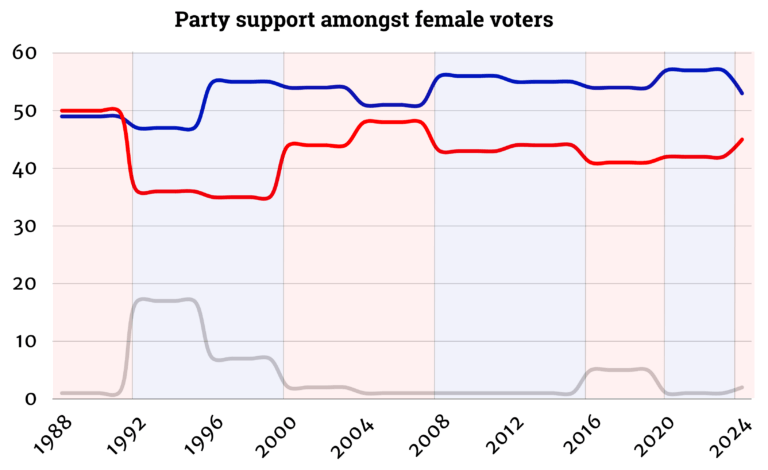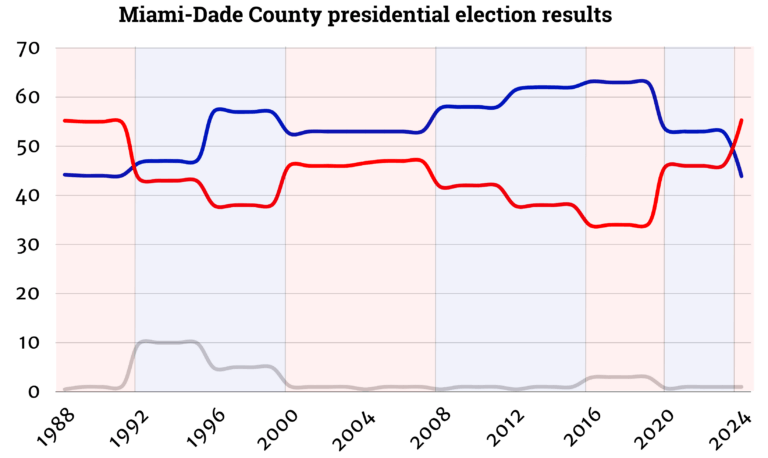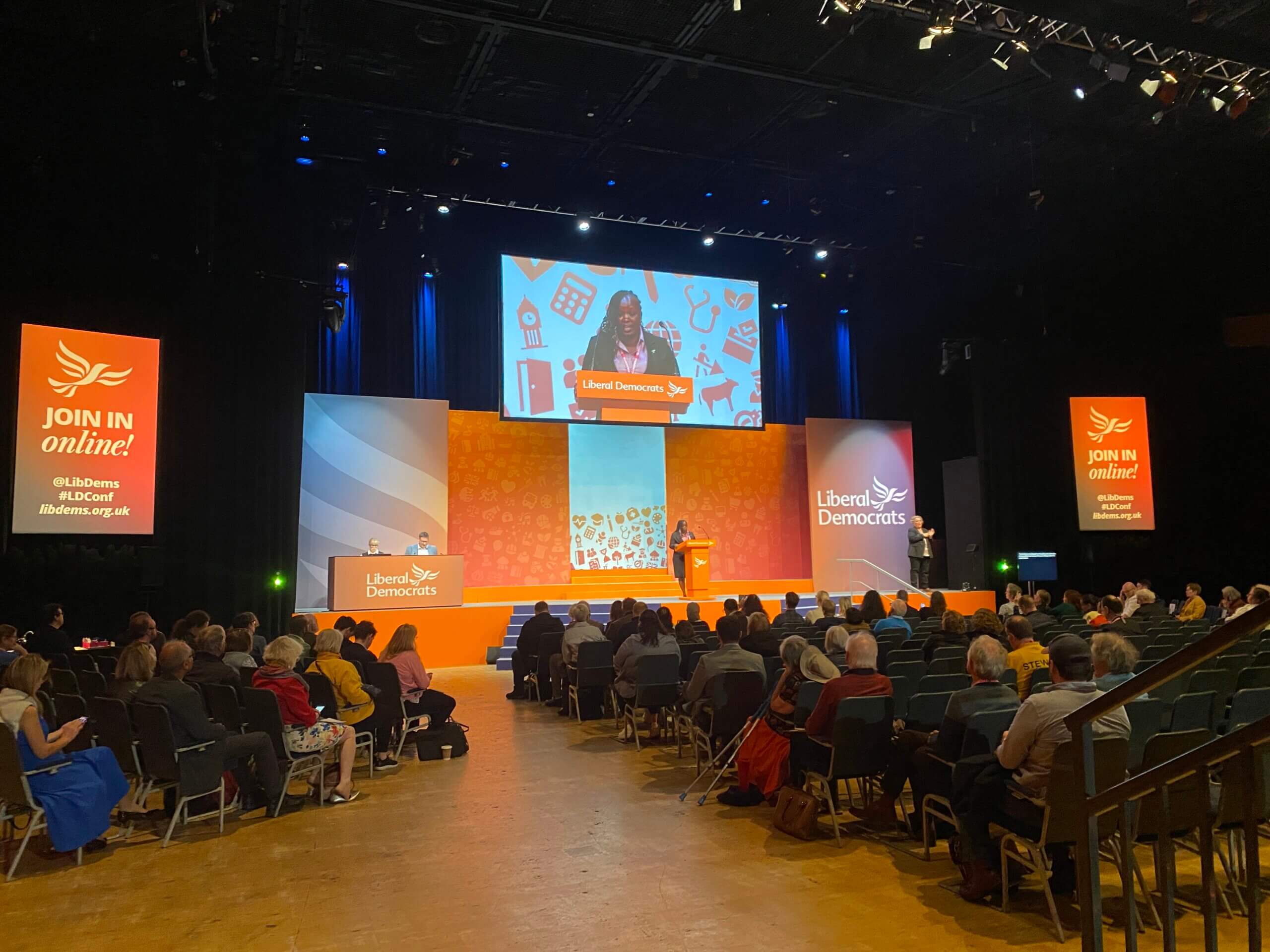Dominic Sandbrook commented on The Rest is Politics’ US coverage of the election that one of the greatest oversights on the part of the Democratic Party was their failure to recognise the importance of ‘flag, faith, and family’—values he assigns great electoral importance to throughout history. America decided that this was a package best protected by another Trump administration. The fact that the Republicans increased their share of male, Hispanic, Black, and young voters demonstrates that their messaging got through.
It's (always) the economy, stupid
The Republicans’ economic messaging certainly resonated with the electorate. In this election, a majority of both Black and Hispanic voters saw the economy as the most important issue when considering who to vote for. Young Americans also shared this perspective, with the rising cost of living serving as a major factor influencing their voting choice. This led to Harris suffering the lowest support among 18–29-year-olds this century. Indeed, young voters who ranked the economy as a top issue voted for Trump by a 78% to 21% margin. The Republicans’ successful economic messaging also reached beyond the youth vote, resonating with blue-collar workers of all age groups who have felt the full brunt of rising inflation costs. The Trump campaign also managed to neutralise the Democrats’ green jobs pledge by framing it as a trade-off at the cost of jobs. Young men, in particular, seemed to feel left out of the economic opportunities envisioned by the Democratic campaign.

Trump’s media appearances, such as on The Joe Rogan Experience, proved popular among young male voters. There have already been discussions within the Democratic camp about whether Kamala Harris should have also appeared on the show to demonstrate a willingness to engage with a demographic she was widely believed to have lost.
Although the success of the Republican campaign’s economic messaging was crucial to the election outcome, it was not the only factor. As Sandbrook pointed out on The Rest is Politics, culture wars are too important to dismiss in 2024. According to a recent Pew Research Center report, three times as many Trump supporters believe society would be better if people prioritised marriage and family. This traditionalist rhetoric resonated strongly with Latino and Black male voters. Ana Valdez, President and CEO of the Latino Donor Collaborative, explained that the Latino vote was up for grabs, with Latino men particularly drawn to Trump’s more abrupt and pugnacious style of politics, which, as Peter Hyman explained on The Rest is Politics, trumped Kamala Harris’s smoother style.
Historic inroads
Indeed, Trump has now become the first American president to win the Latino male vote outright. The shift in Puerto Rican support in Pennsylvania no doubt blindsided the Democrats, especially following the controversy surrounding a comedian at a Trump rally who referred to Puerto Rico as a “floating island of garbage” just before the election. This trend was not limited to male voters but extended to the Latino vote in general, which nearly doubled its support for Trump in Pennsylvania. The Hispanic-majority county of Miami-Dade in Florida provides the strongest example of Trump’s success in capturing the Hispanic vote. The county, which has traditionally produced ten-point Democratic leads in general elections, was won by Trump.

One in five Black men also turned out for Trump, representing another segment of the electorate that the Democrats failed to capture effectively. Some have attributed this to the Democrats’ lack of focus on issues affecting Black men during the campaign. While in the past, it was “soccer moms” who were seen as the swing voters, this time, it was men of colour—and Trump’s clear, convincing messaging won them over. Like Latino male voters, Black male voters were swayed by Trump’s culture-war rhetoric. Indeed, rhetoric from Barack Obama that, in another era, might have convinced Black males to vote Democrat, fell flat. At a community event in Pittsburgh, Obama’s questioning of Black voter support was seen as patronising and did little to persuade Black voters where to cast their ballots. The Black male vote has proven to be economically liberal and culturally conservative in this election, aligning more with the traditional white male Trump voter. Most striking is the fact that, while Biden won nine out of ten Black voters in 2020, Trump won over 20% of them nationwide in this election.

Finally, an important shift that worked in the Republicans’ favour was their ability to capture the Arab vote. The word “ability” is key here, as the Democratic campaign did little to persuade Arab voters. Cities such as Dearborn, Michigan, with a significant Arab population, were not even visited by Harris’s campaign. A similar lack of outreach in 2016 cost Hillary Clinton the region, where she lost by just 0.23% in an area she was expected to win. This time, the city saw a 33-percentage-point shift compared to when Biden won it in 2020. While it could be argued that this was an opportunity missed for the Democrats, Biden’s stance on Israel has left Arab voters in areas like Dearborn feeling vindicated.
In conclusion, a combination of strong economic messaging and successfully engaging in the culture debate with various demographic groups that had previously leant Democrat has won Trump a commanding majority. For many, this victory may seem out of the blue, but America has clearly turned out for the reds.







